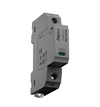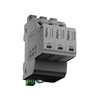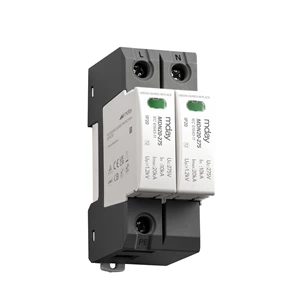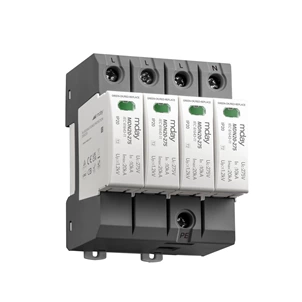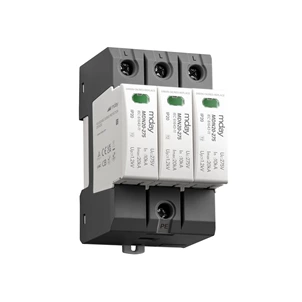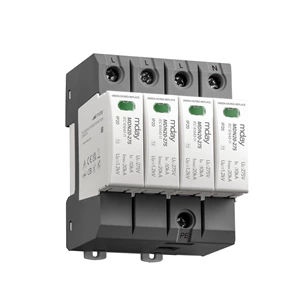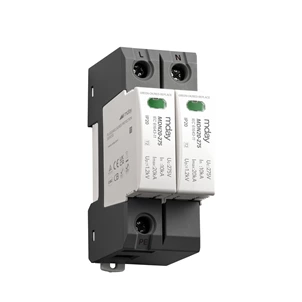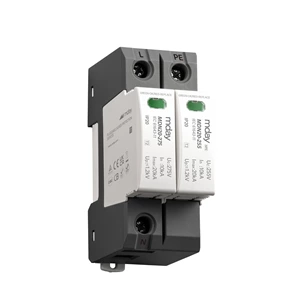Remote Signal Terminal Of Surge Protection Device
Introduction
Remote signal terminal (Dry Contacts) of a Surge Protective Device (SPD) are primarily used for remote monitoring of the SPD's operational status. When the SPD deteriorates or fails, it outputs a discrete switch signal. If clients wish to remotely observe SPD degradation via a computer system, these signaling contacts can be integrated into a monitoring system for real-time alerts. As illustrated in the diagram, the remote signaling contacts typically protrude as a small green terminal on one side of the SPD, making them easily identifiable.
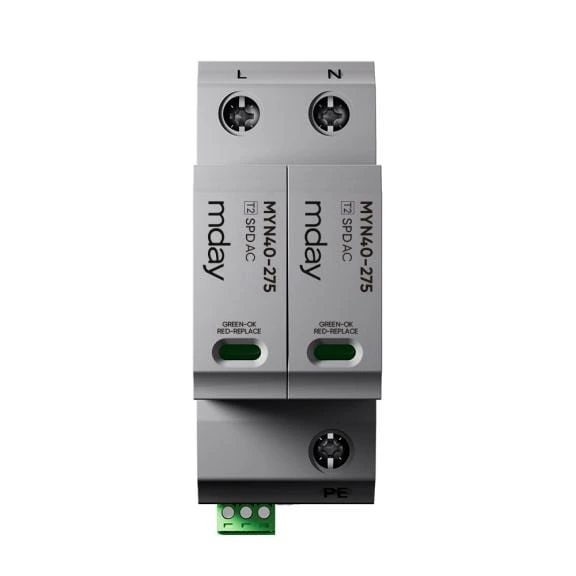
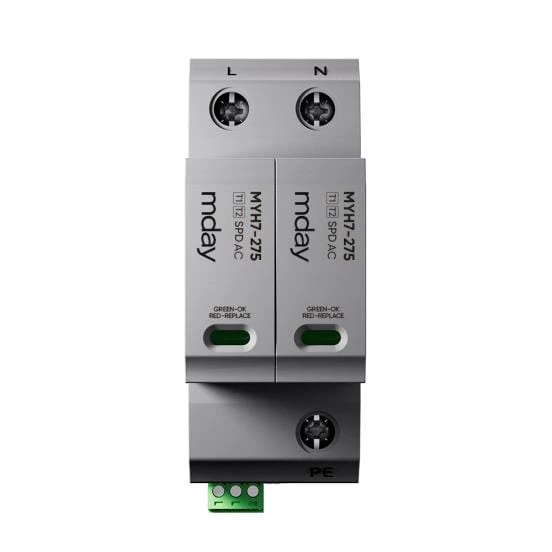
Composition
The COM, NC, and NO terminals of the remote signaling contacts constitute a status switching circuit:
COM (Common Terminal): The common connection point for signal paths.
NC (Normally Closed):
- During normal SPD operation, NC and COM maintain a closed (closed-circuit) connection.
- Upon SPD failure, the NC-COM circuit transitions to an open-circuit state.
NO (Normally Open):
- During normal SPD operation, NO and COM remain in an open-circuit state.
- Upon SPD failure, the NO-COM circuit forms a closed (closed-circuit) connection.
Working Principle
Under normal SPD operation (the thermal trip device not activated), the NC-COM terminals maintain a closed circuit, while the NO-COM terminals remain an open circuit . Upon SPD failure (e.g., damage from lightning strikes or overheating), the thermal trip device activates, causing the NC-COM circuit to open and the NO-COM circuit to close. This state transition generates a discrete switch signal to the monitoring system (e.g., PLC or Building Automation System), triggering an alarm.
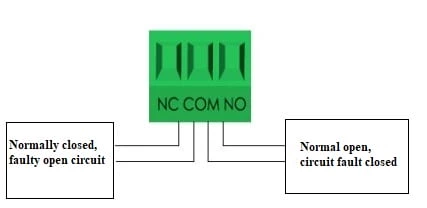
Application Selection
| Scenario | Recommended Contact | Rationale |
| Requires "open-circuit triggers alarm" during faults | NC | Under normal SPD operation, NC-COM maintains a closed circuit (closed-circuit), while upon SPD failure, it transitions to an open-circuit state. This is compatible with systems configured to interpret circuit interruption as an alarm signal (e.g., critical power SCADA systems). |
| Requires "closed-circuit triggers alarm" during faults | NO | Under normal SPD operation, NO-COM remains an open circuit, while upon SPD failure, it forms a closed circuit (closed-circuit). This suit systems designed to activate alerts upon contact closure (e.g., building automation systems). |
Wiring Precautions
- Grounding for EMI Suppression:The signal cable shield layer must be single-point grounded (at either the SPD or equipment terminal) to prevent electromagnetic interference from causing false alarms.
- Cable Length Restriction:Recommended maximum length: ≤50 meters. Exceeding this limit may cause signal attenuation; install signal repeaters if longer distances are required.
- Compatibility Verification:Ensure the monitoring device's input voltage/current matches the SPD contact rating (typically ≤24V DC, 100mA). Exceeding these limits may damage the monitoring circuit.
- Safety Compliance:Insulate exposed conductors with electrical tape after termination.
Avoid parallel routing with power cables (minimum separation ≥20cm) to reduce induced noise and arc risks .
Application
Mday SPD support optional remote signal terminals. Mday's remote signal terminal interface is a universal RS485, which can be seamlessly integrated into various systems.
System:
- Intelligent power distribution monitoring unit
- Building and Industrial Automation Systems (BAS/SCADA)
- Lightning Protection Monitoring System
- IoT gateway and cloud platform
- Simple status indicator

